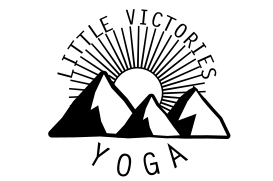Surprising Things to Consider Before YTT
Be curious, expand your knowledge, and grow.
Chances are that since you are reading this, you are probably considering attending a yoga teacher training, and that is awesome! I became a yoga teacher so that I could better share the benefits of yoga and the ways in which it transformed my life. I had been practicing yoga for a few years and was ready to take the next step. Many people have no interest in teaching and go through teacher training for personal growth to deepen their knowledge and connection to the practice.
If you are, on the other hand, interested in signing up for a teacher teaching with the intent to teach yoga, there are a few things you should consider beforehand that aren’t exactly apparent. These are not meant to deter any of you. In my mind, the more informed, welcoming, and well-trained yoga teachers, the better! Wanting to teach yoga requires a lot more beyond knowing Sanskrit, creating a great sequence for class, and knowing the philosophy behind the practice. Consider the following before applying for a YTT if you are interested in teaching:
1. Teaching a yoga class is essentially like giving a presentation to an entire class, every single time.
For the most part as a teacher, you are the center of attention. Many yogis in your classes will focus on turning their attention inwards, but you will remain front and center throughout the class as the only one speaking and walking around. When the students walk in, they will look at you. When your directions are unclear or you call out a pose they do not know, your students will crane their heads to look at you. When you demo a pose, your students will, again, look at you. If you are extremely uncomfortable with being in front of a group, especially speaking in front of a group, teaching yoga just might not be for you.
2. As long as you want to teach, you’ll need to keep taking additional trainings/workshops.
You will not learn everything there is to know about yoga during a 200-hour teacher training, a 300-hour training, or any subsequent training. There is always more to learn. As a teacher, you are also always a student. There will always be new things to learn, helping you to grow and become an ever evolving, stronger teacher. A passion for learning pairs really well with a passion for teaching.
If you decide to register with Yoga Alliance, you will need to complete 30 hours of continuing education (CE) every three years. Many studios will require that you are registered with YA in order to teach there and to maintain that you qualified. CE hours can be in the form of a workshop, a weekend training, and even as online courses.
3. You are choosing to run your own business. The business is, well, you.
Know your worth. I started off teaching free and donation-based classes, but after getting plenty of teaching hours under my belt and additional training, I made sure to stand firm about the prices I charge for my business. Don’t sell yourself short. Be confident in your teaching, which comes easier with the above mentioned tip about additional trainings and always being a student as well as a teacher. Don’t be afraid to promote yourself and what you offer to anyone and everyone. If you never ask, you’re pretty much forcing them to say no.
I think it’s also important to get familiar with advertising/design if you’re not already. Creating eye-catching, easy to read flyers about your upcoming class offerings or workshops is incredibly important and beneficial. There are plenty of free online design apps if you don’t have Adobe Illustrator or Photoshop. My current favorite free design app is Inkscape.
Creating flyers, social media posts, and more to promote your classes is firstly your responsibility as the owner of your teaching business. Even if you land a teaching job at a studio, it’s still really up to you to promote your classes and workshops. Word of mouth is probably the number one way to grow your class size, so don’t hesitate to ask your students for reviews if that is an option or to ask them to bring their friends next time.
As a business owner, and for many yoga teachers a first time business owner, mistakes are bound to happen. Like all things, this is a learning process, a practice if you will, and definitely takes time to get the hang of things. Some mistakes will be more costly than others, so be ready to make big decisions that can have a large impact (see next tip about insurance to make this a bit easier). The best advice I can give in regards to making such decisions is to follow your gut. Your intuition is telling you something for a reason.
Lastly, when you are running your yoga teaching business, I hope that you choose to run your business in a kind and humble manner. It’s worth it to slow down and ask yourself if you’re living your yoga.
4. Many studios require that you have yoga teaching insurance.
Whether or not a yoga studio or your place or employment requires you to have yoga insurance or not, I recommend having it either way. Accidents happen. Sometimes blame can fall on you even if an incident was not your fault, and sometimes an incident will be your fault. As the saying goes, it’s better to be safe than sorry.
Many types of yoga teaching insurance also cover additional career paths, such as massage, group fitness, and more. It’s nice to have this kind of umbrella coverage that way if you offer multiple services to your clients, everything will be covered in the event of an injury, sexual misconduct accusation, and so on.
There is another benefit to being covered. The majority of yoga insurances on the market also come with incentives. Such incentives include discounts on gear, apparel, trainings, and free resource guides. Don’t forget that yoga props and apparel can also be written off on your taxes as a work expense.
The insurance that I currently have is through BeYogi. Thankfully, I have never had anyone file a claim against me, but I am happy to have the insurance through BeYogi nonetheless. This also circles back to tip #2, learn, learn, and learn some more. If you don’t know something we enough, don’t teach it. Don’t compromise your clients safety, especially with hands on adjustments you are uncomfortable making. The more you learn, the safer and probably more satisfied everyone will be. But again just as a precaution, I recommend having the insurance even if where you work does not require it.
I hope you have enjoyed these tips and that they will be of use to you. Feel free to contact me with any questions if you’re considering YTT! For those of you who have already taken a training, what was something you wish you had known beforehand that would have been really helpful to know?




